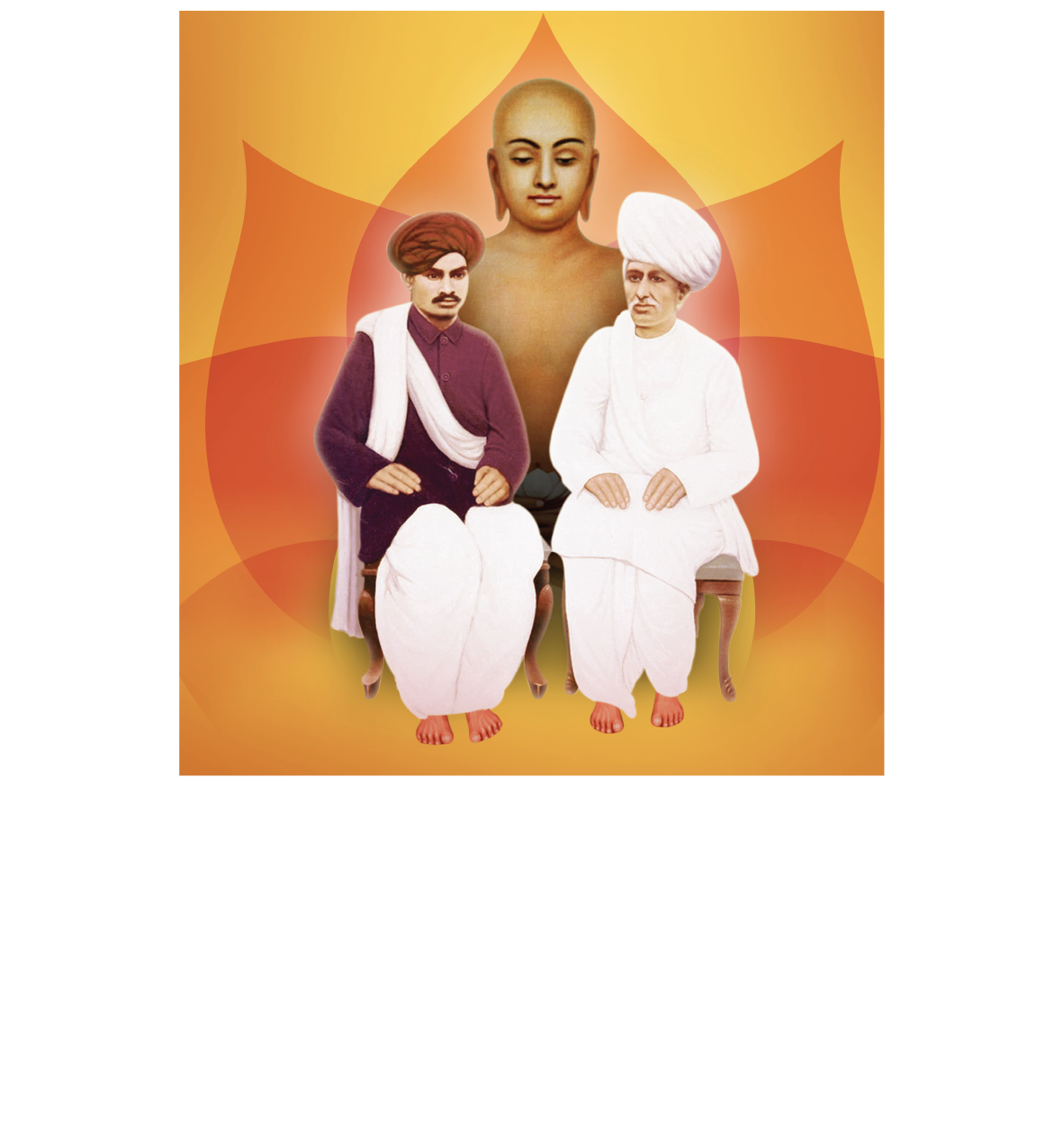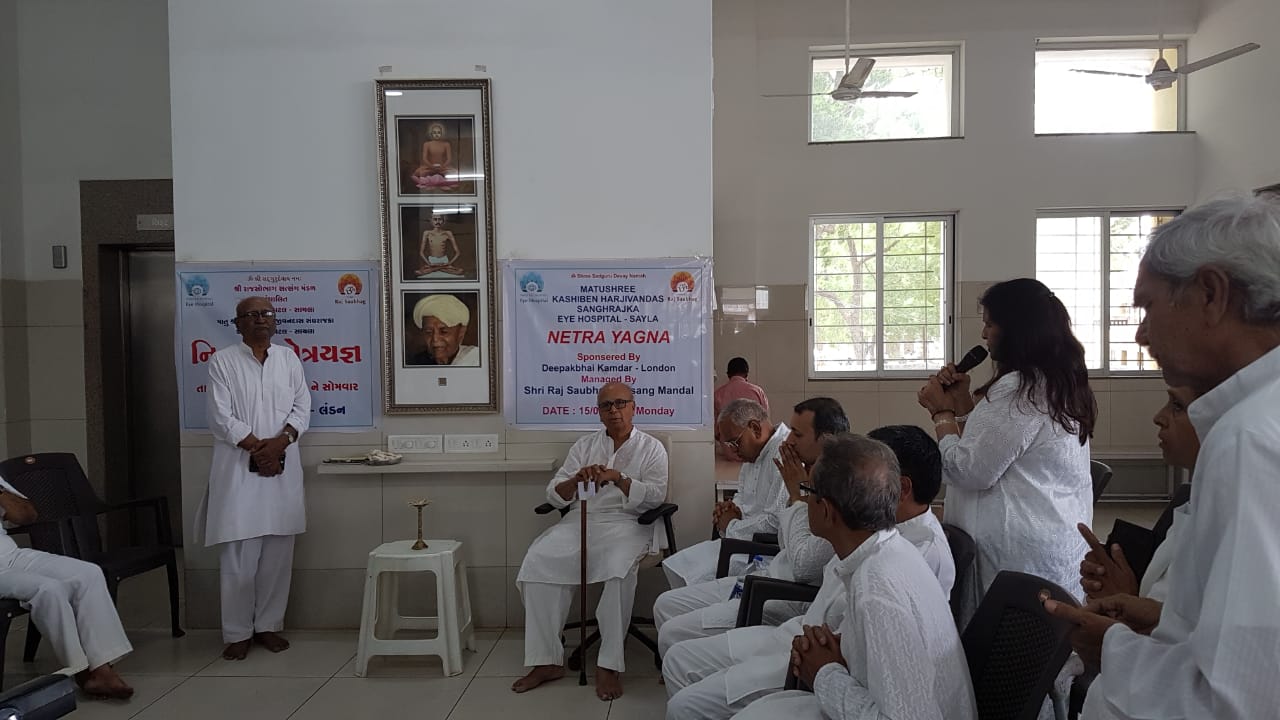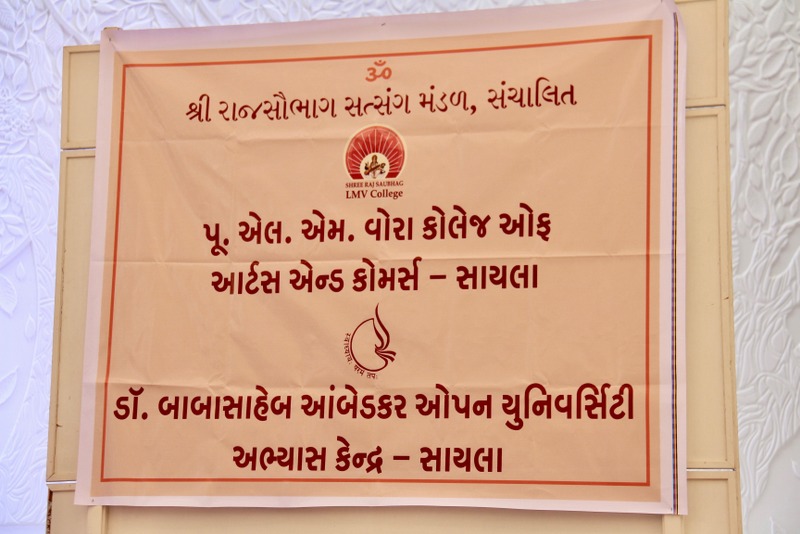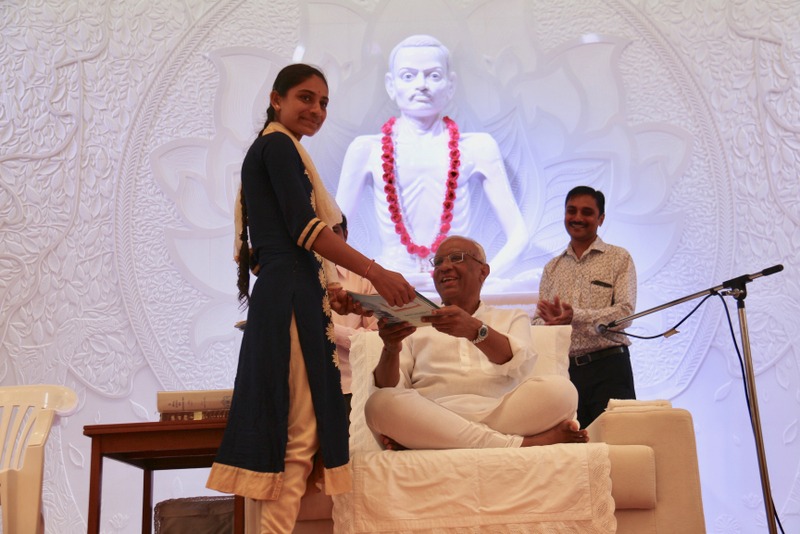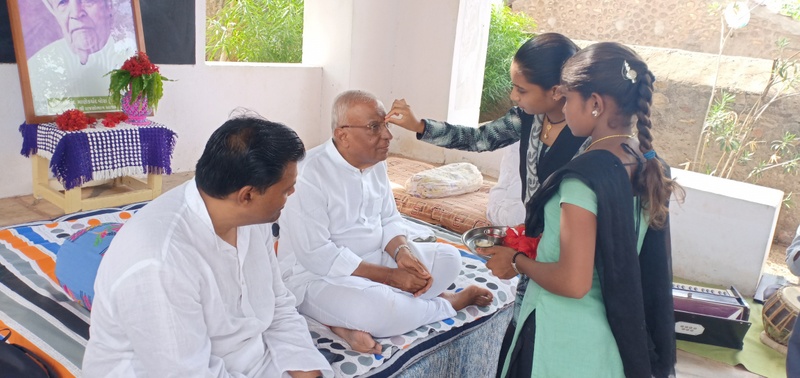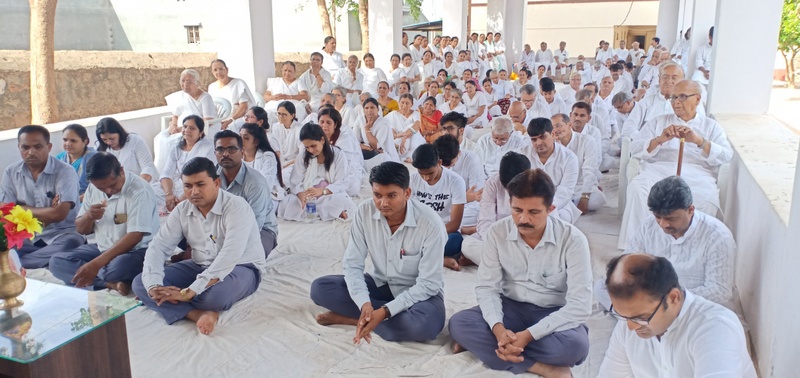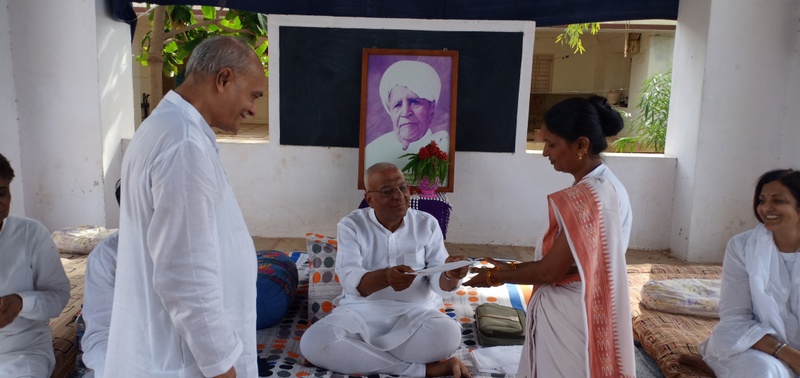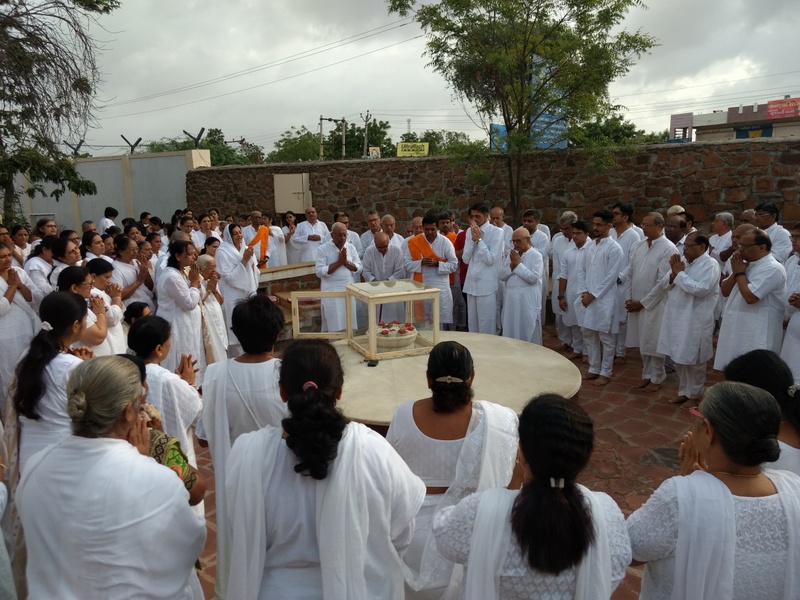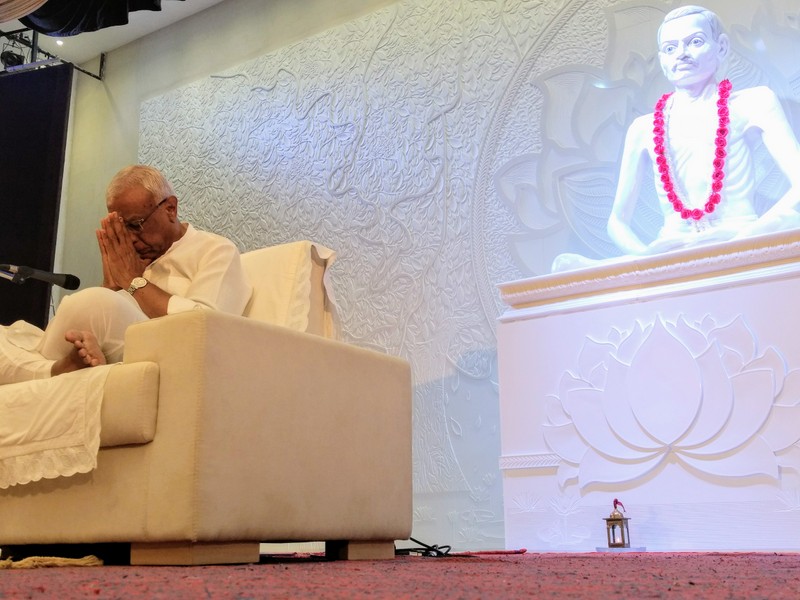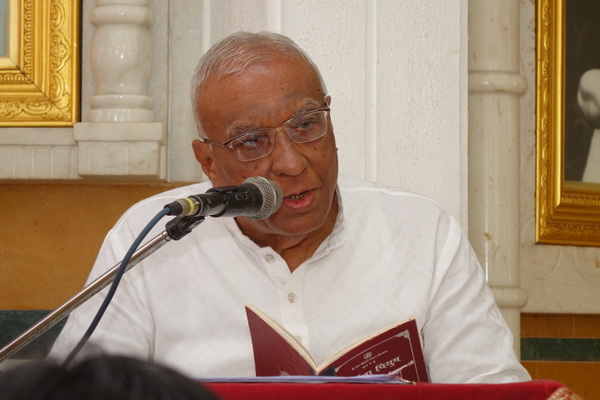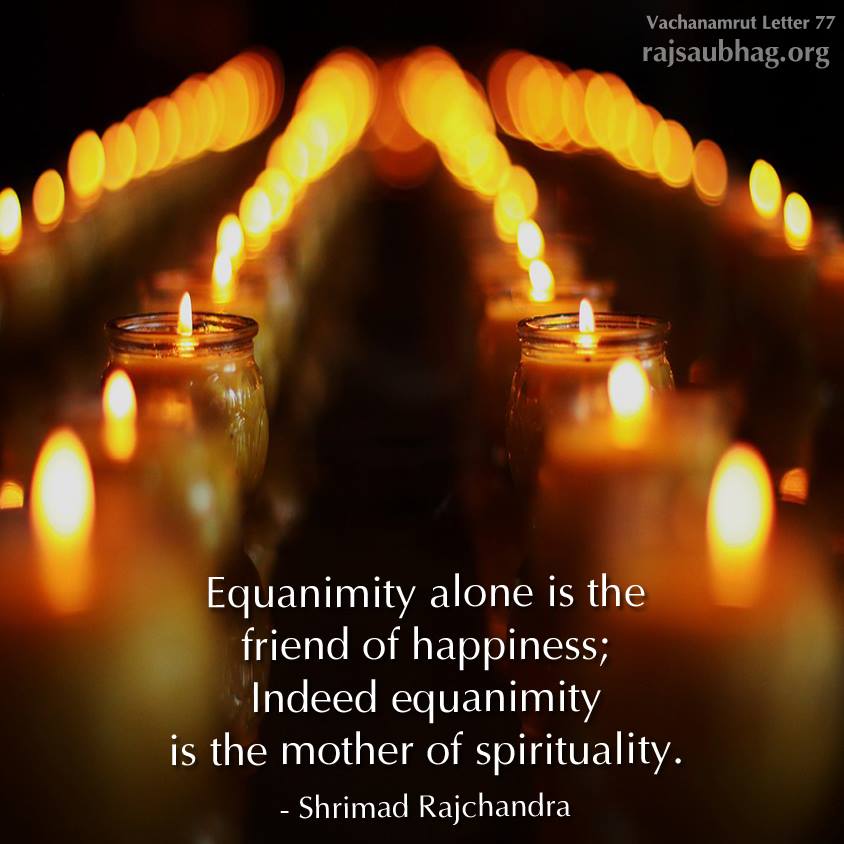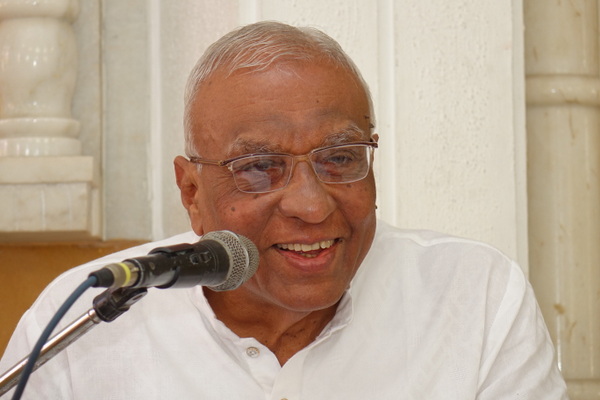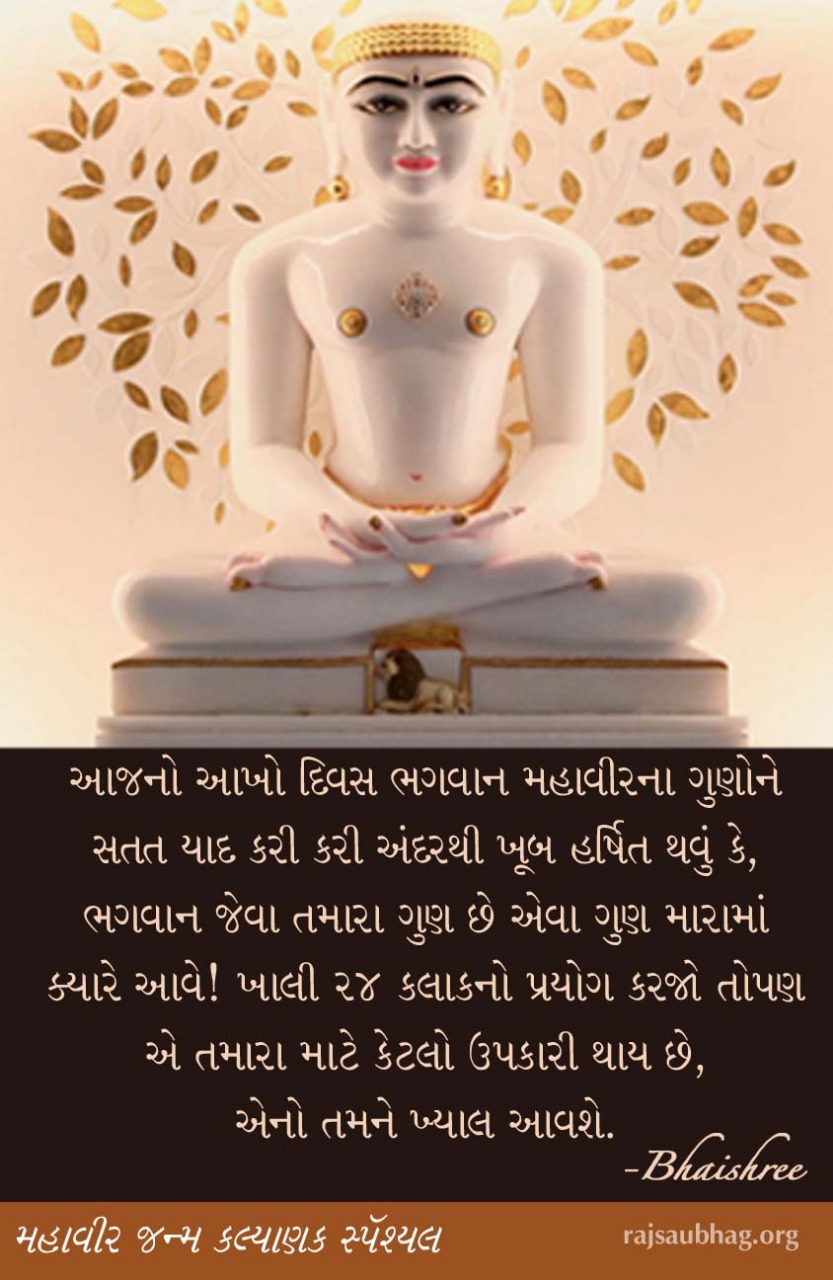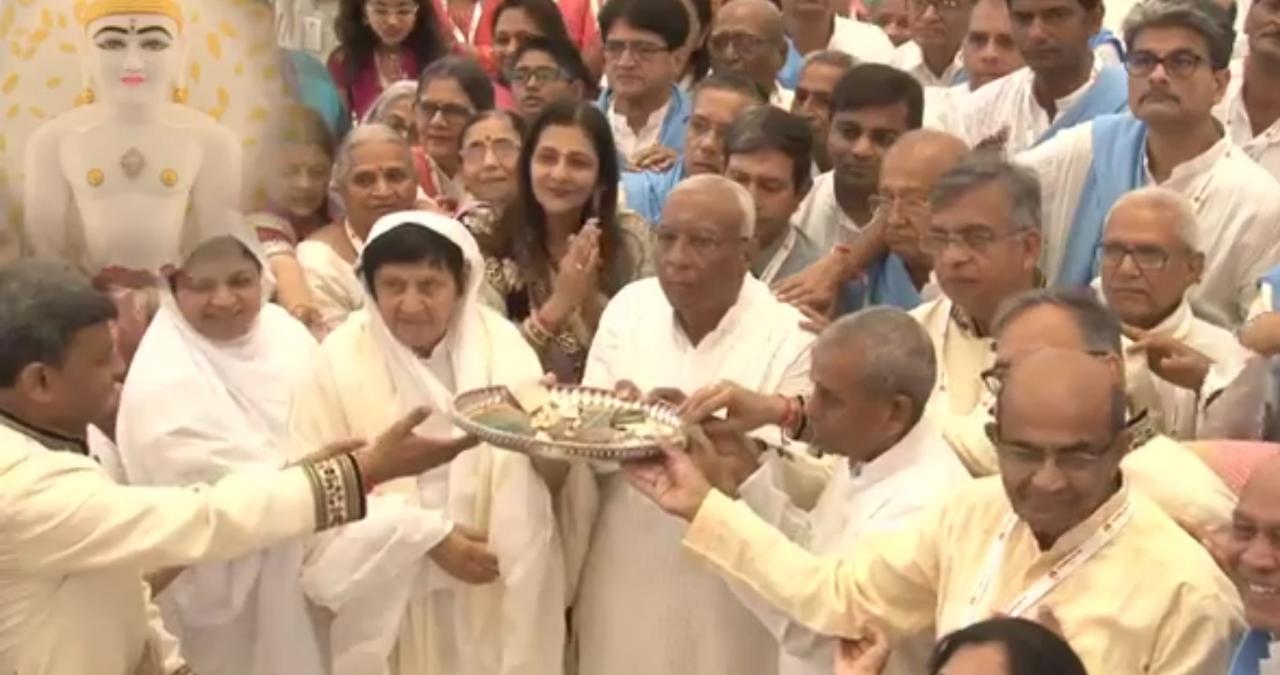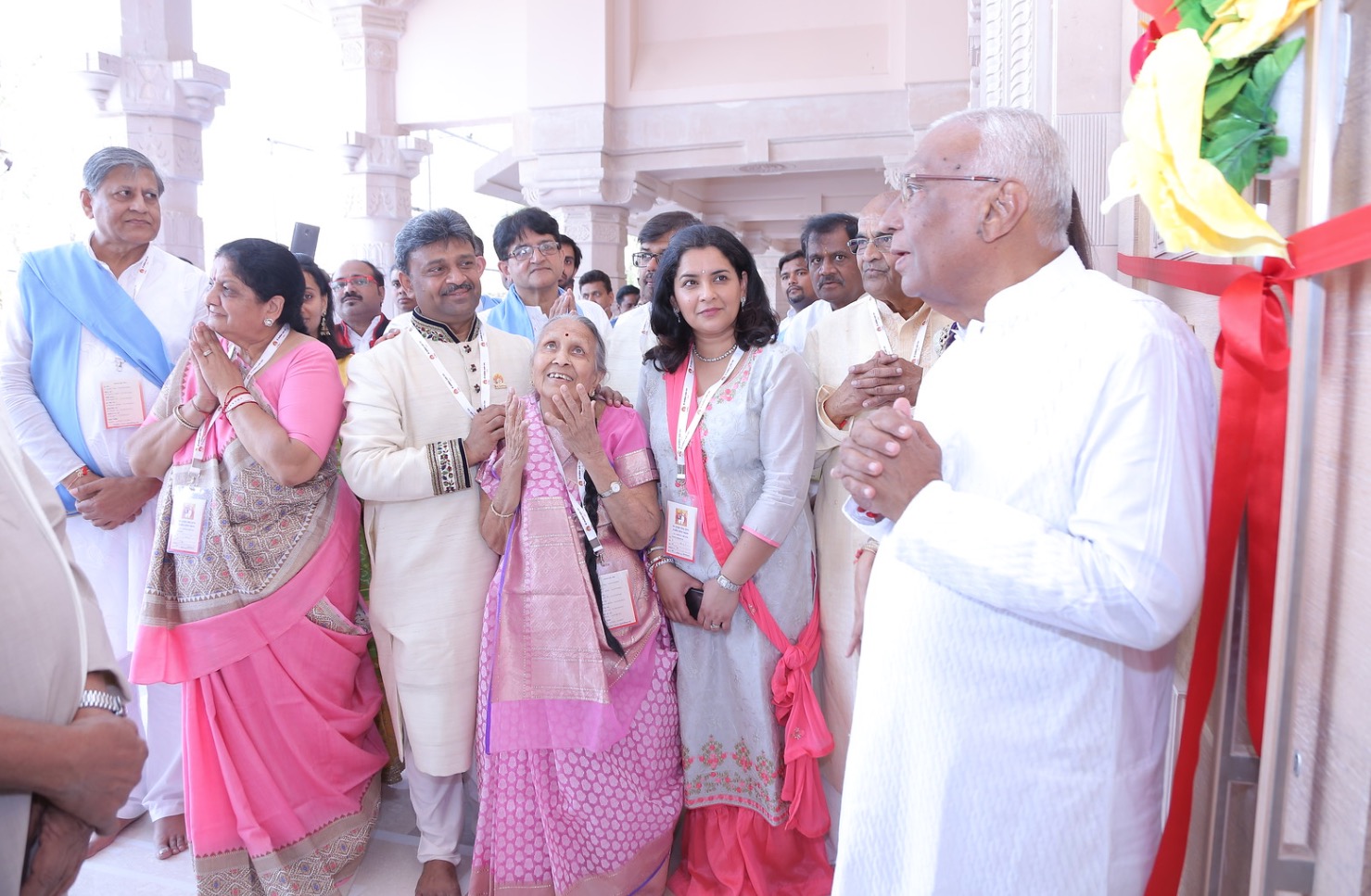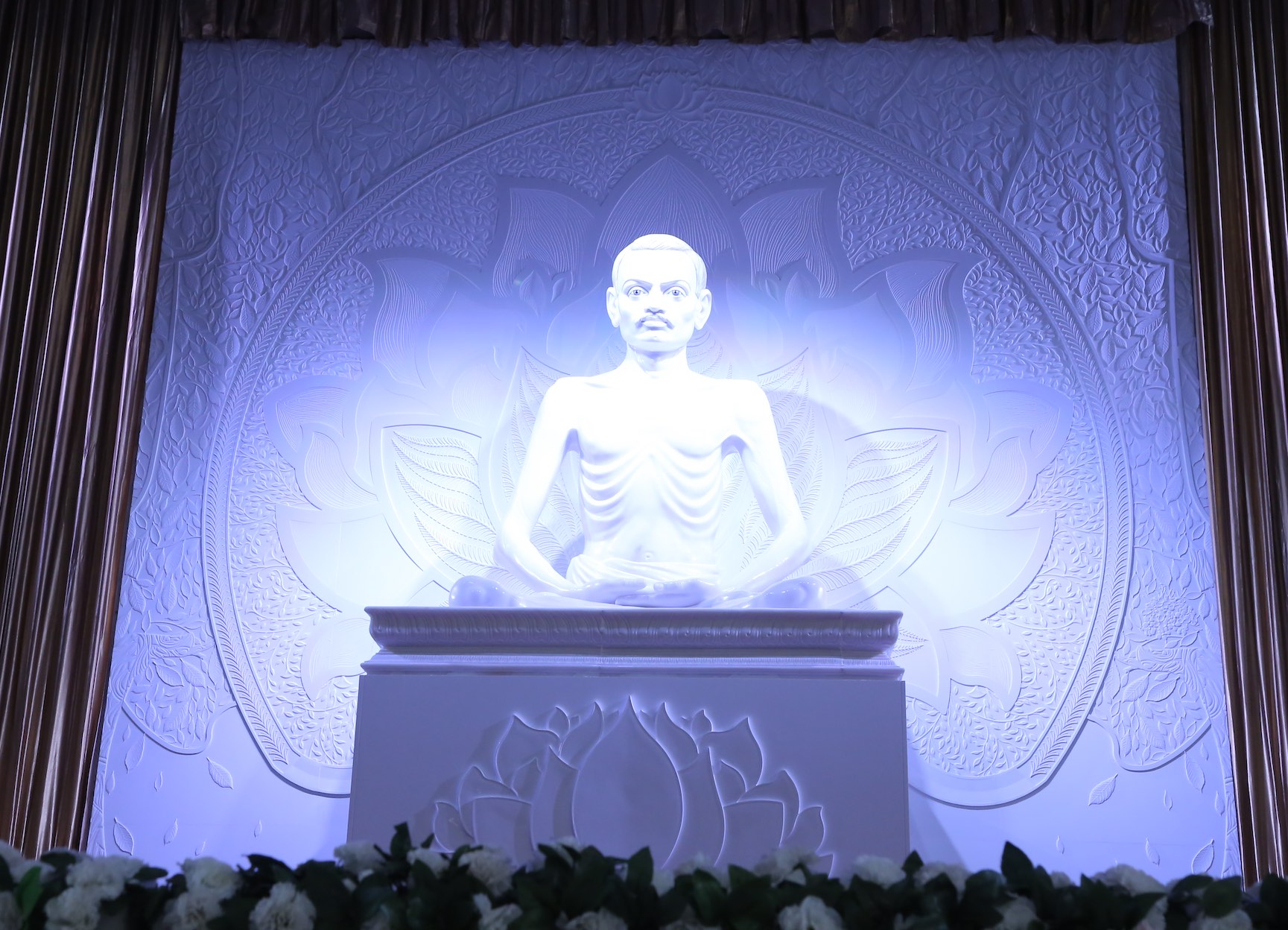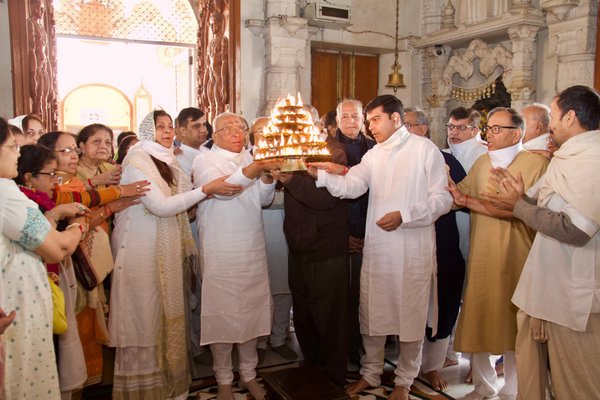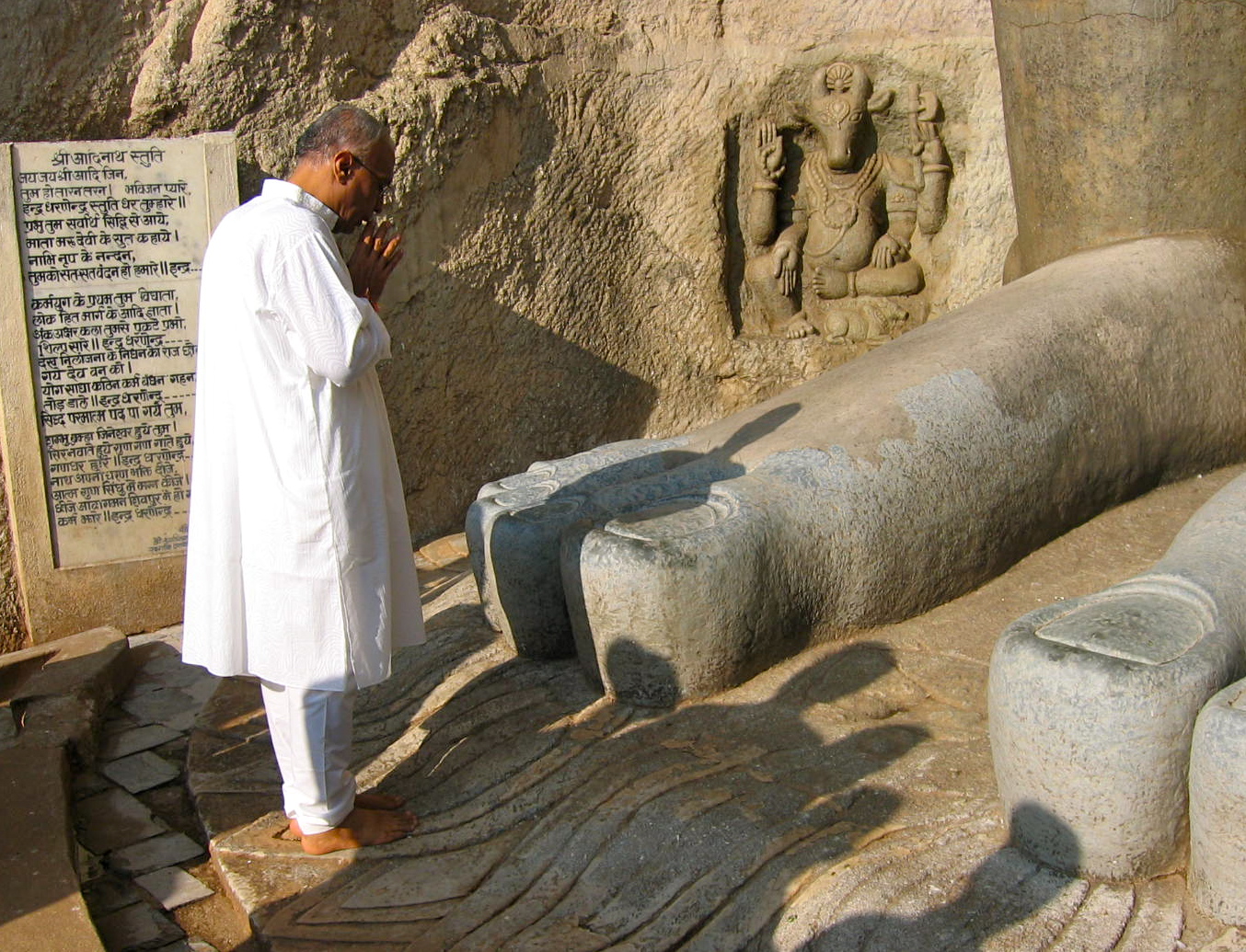Faith & Surrender
Gurupurnima 2019
This shloka from the ancient Vedic Scriptures explains the supreme place a teacher or Guru holds in the hearts of his disciples:
Gururbrahmā Gururviṣhṇu Gururdēvōh Mahēśhvaraḥ...I
Guru Sākṣhāta Paraṁ Brahmah Tasmai Shrī Guravē Namaḥ...II
Meaning: Oh teacher, you are akin to the Gods. You are Lord Vishnu and you are Lord Shiva – the God of the Gods. Oh teacher, you are the supreme being, and you are Lord Brahma for me. Thus, oh revered teacher, I bow in front of you.
The Full Moon day in Shukla Paksha during the Lunar month Ashad is celebrated as Guru Purnima. In the word Guru - Gu means darkness, ignorance and Ru implies elimination or removal. So, Guru is literally the one who removes the darkness of ignorance from our lives, and extricates us from the potentially eternal cycle of births and deaths.
Day 1: 15th July
The 3-day celebration began with waking up in the Brahma-mahurat and doing meditation followed by the morning regime of love (Agna Bhakti) and Chaityavandan.
Eye Camp in Matushree Kashiben Harjivandas Sanghrajka Eye Hospital, Sayla
Mumukshus participated in an Eye Camp sponsored by UK-based Deepakbhai Kamdar. A total of 100 cataract surgeries were performed free of cost, at this camp (which is part of multiple camps organised throughout the year, since many years).
After lighting the inaugural lamp, trustee Shri Vinubhai Shah said: “In the very initial years, eye operations were performed by Raj Saubhag Ashram in collaboration with Virpur Ashram. In the secondary stage, operations were performed in the ashram complex itself. Government regulations and increasing number of patients required enhanced facilities, and therefore this eye hospital was built and later expanded in Sayla village itself. A lot of people advised against establishing a hospital in a centre as small as Sayla, since larger centres were unable to attract large numbers of patients and not more than 10 surgeries are performed every month. However, due to Pujya Bhaishree’s characteristic long term vision, and with his selfless efforts and grace, the hospital in Sayla was established and expanded some years later. Today, over 700 surgeries are performed every month in Sayla.”
Unveiling of Dr. Ambedkar Open University Study Centre
The morning special session in the newly opened, architectural masterpiece Raj Mandir, witnessed a historic unveiling of a collaboration between L.M.Vora College of Arts and Commerce and Dr. Babasaheb Ambedkar Open University (affiliated to Government of Gujarat offering distance learning diploma and degree programs). The available degree courses would be M.A (Master of Arts), B. Com (Bachelor of Commerce), BPP (Bachelor Preparatory Programme) and CCC Computer course. L.M.Vora College has been chosen as one of the study centres for Dr. Ambedkar Open University.
In a village like Sayla, where a mere 20 years ago, educating the girl child beyond primary school and sending her to high school was unimaginable; slowly but surely a tectonic shift is taking place. Now, girls would be able to spread their wings and become university graduates without opposition from family members and society. All this has been achieved due to the tireless efforts and vision of Pujya Bhaishree.
Project director Chandrakantbhai Vyas said: “I have always explained to my girl students, that education is the main reason for all progress – intellectual, economic and social progress. The L. M. Vora College girls students are making their place in the whole zilla district. To all those who support educating the girl child, I say that, this is superior to all other donations. When we started the Arts and Commerce college, there were 7 enrolments in the first year. Today, over 500 girls are studying in the college. In the same way, we have 11 admission applications for the graduation course, and I can foresee that this number will grow to hundreds and thousands. The ceremonial lamp that has just been lighted will drive away the darkness of illiteracy. I thank Pujya Bhaishree again and again for his unflinching support and vision.”
Morning Discourse
During the morning param satsang on Gnansaar, written by the venerable, eminent Upadhyay Shri Yashovijayji Maharaj Saheb, Pujya Bhaishree said: “A majority of the people are immersed in sansaaric activities, searching for happiness in transient objects like wealth, indulgence of the senses, worldly comforts, or fame; while an Atma gnaani has found happiness within himself, just like the Mansarovar swan. Merely memorizing verses from the scriptures is not enlightenment. For a sadhak aiming to reach his spiritual goal – he would need to focus on qualities to purify his soul, and not be blinded and weighed down by knowledge for the sake of knowledge. Atma Gnaan or Granthi Bhed should be every seeker’s goal and that is the highest, greatest, ultimate goal of this human birth.”
Emphasising the wisdom of the above words with narratives from the lives of Adi Shankracharya, Manjhibhai Patel among others, Bhaishree explained in great detail how the quality of Sambhaav (equanimity - not getting swayed by likes or dislikes) contributes greatly on the path of spiritual progress. Bhaishree ended his discourse with: “I send good wishes and prayers to every mumukshu to progress on this spiritual path with great speed.”
Visit to Chorvira & Evening Celebrations
In the afternoon session, the mumukshus participated in a Jatra to Chorvira, (birthplace and school of their benefactor Pujya Bapuji) and Panch Kalyanak Puja with great enthusiasm. After dinner, was the daily Arti, Mangal Divo and evening Dev Vandan; followed by Bruhad Alochana (a deeply meaningful prayer in which devotees recount their misdeeds and ask forgiveness with great humility). Since it was the auspicious day of chaudas, everyone recited the Bruhad Alochana together.
A cultural programme by mumukshus from different parts of the world and different parts of India, brought this eventful day to an end.
Day 2: Guru Purnima – 16th July
After the morning meditation and agna bhakti, mumukshus lined up from Pujya Bhaishree’s kutir to the Raj Mandir to welcome their benefactor with soaring devotion in their hearts. At the first glimpse of Pujya Bhaishree coming out from Pujya Bapuji’s kutir, after bowing before his Guru (P Bapuji), warmed every heart beholding him. Each and every mumukshu bowed at his lotus feet as he passed them, while Pujya Bhaishree remained in his perfect balanced, unmoved inner state – a witness, full of humility and kindness in the midst of so much veneration and adoration.
The mid-morning session began with distribution of aids and appliances to individuals with motor impairment; and a dance performance by children with special needs from Ashirvad Trust for the Disabled. This centre has been doing exemplary work by empowering individuals with impairments via access, equal opportunities and love.
The morning Guru Purnima session also witnessed divine bhakti, messages and cards from mumukshus around the world were read and presented to Pujya Bhaishree by Minalben. Dubai mumukshu group presented their Guru Purnima card themselves with a 5-minute group performance.
In his param satsang, Pujya Bhaishree said: “An ever increasing faith in the True Deity, True Guru and True Path, with complete devotion will surely lead to spiritual progress. Such a sincere devotee will achieve salvation within 15 births, say Tirthankars. Having said that, the qualities of Upsham (calming the passions) and Vairaagya (detachment) need to be cultivated and nurtured constantly and consistently. As Param Krupalu Dev says: “ભક્તિ પ્રધાન દશાથી વર્તવાથી, જીવના સ્વચ્છંદ આદિ દોષ સુગમપણે વિલય થાય છે”. Just like the Gopis, who though living in sansaar, remained detached from sansaari relations, objects and situations. They were only connected to the Divine. In the same way mumukshus must remain detached from worldly objects and situations and be connected only to the Satdev, Satguru and Satdharma. This supreme devotion of the disciple towards his Guru, will elevate the disciple to the spiritual level of his enlightened Master. This is Para-Bhakti.”
The afternoon session continued with selected mumukshus sharing with the audience their divine experiences with Pujya Bhaishree, giving everyone a glimpse into the divinity that personifies our benevolent Guru.
Evening session consisted of Arti, Mangal Divo, Dev Vandan and Atma Siddhi. A 30-minute film on the UK Dharma Yatra and bhajans and bhakti immersed every person in the audience in devotion and bhakti bhaav.
Day 3: 17th July
Day 3 arose with meditation, agna bhakti and veneration to all our Guruvaryas.
Mumukshus also participated in another eye camp, sponsored by the Parekh family based in Baroda and UK.
Two more mumukshus shared their experiences and Bhaishree gave a discourse on purusharth (spiritual striving). During the Param Satsang in the mid-morning, Pujya Bhaishree questioned: “If you want to progress on the spiritual path, can you do so while giving in To Anger? To Egotism? To Malice? To Greed? Each and every mumukshu must master the art of suppressing his negative qualities and trying sincerely to overcome them. The reins of likes and dislikes (raag and dvesh) must be firmly held within our own hands, and we must not allow any of these to supersede us, overwhelm us.”
Pujya Atmanandji and his disciples from Koba Ashram arrived in the Ashram on the 18th July, to an extremely warm welcome by Pujya Bhaishree, Vikrambhai, Minalben and all the mumukshus of Shree Raj Saubhag Ashram.
The three days celebrations ended with Bhaishree’s key message urging seekers to strengthen their spiritual foundation by cultivating inner faith and complete surrender. These two foundational virtues will help us remove vices, increase our focus and become one with our enlightened mentor.
Swadhyays - video recordings
Day 1 - Morning Swadhyay
Day 2 - Morning swadhyay
Day 2 - Afternoon Swadhyay
Day 3 - Morning Swadhyay
Day 3 - Afternoon Swadhyay
Dr. Ambedkar Open University - LMV College Study Center - Param Pujya Bhaishree’s Aashirvachan
